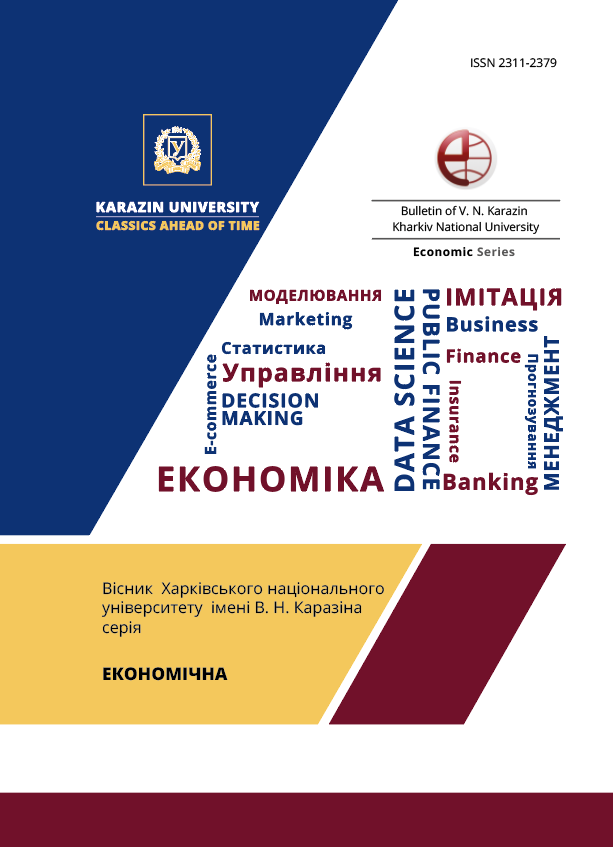Rethinking the business process through reengineering
Abstract
In management, there are many management approaches that make it possible to increase the performance indicators of the enterprise. At the same time, the priority direction of the development of enterprises is the implementation of innovative activities. To achieve success in this area, companies are changing management approaches, organizational structures and business models. However, in the conditions of constant aggravation of the competitive struggle, the achievement of high indicators of the enterprise's activity is best ensured by the reengineering of business processes. The innovativeness of reengineering lies in the fact that it combines the use of the prerogatives of computer technologies, human resource management technologies and changes in business processes. In the current economic conditions, the speed of reaction of all subsystems of the enterprise and the efficiency of operations are of particular importance and are a necessary condition for its effective functioning in the conditions of constantly intensifying competition. In this situation, reengineering is the most effective, because it contributes to increasing the efficiency of the enterprise by changing the business model it uses. Therefore, the study of reengineering procedures, its principles and tasks is relevant in today's conditions. The purpose of the study is to generalize theoretical approaches to the main principles, types and tasks of business process reengineering as a tool for effective enterprise management. The methodological basis of the study was the work of domestic and foreign scientists on the problems of reengineering and change management of enterprises. Business process reengineering is a thorough rethinking and radical redesign of business processes of enterprises that want to significantly improve their performance. . It is used when it is necessary to make a reasoned decision about the reorganization of activities: radical transformations, business restructuring, replacement of existing management structures with new ones, etc. Thanks to the effective use of business process reengineering tools, it is possible to make the enterprise more flexible to changes in the external environment and more stable in competitive conditions. Thus, the reengineering of business processes involves a decisive, fundamental restructuring of business processes and the foundations of the management organization in order to significantly increase the competitiveness of the enterprise on the market and significantly increase the efficiency of the enterprise as a whole system.
Downloads
References
Davenport, T., and Short, J. (1990). The New Industrial Engineering, Information Technology and Business Process Redesign. Sloan Management Review.
Delligatta, A. (1992). System reengineering and the user. Information Systems Management, 9(1), 76-77. doi: https://doi.org/10.1080/10580539208906853.
Bhaskar, L. (2018).Business process reengineering: A process based management tool. Serbian Journal of Management, 13 (1), 63-87. doi: https://doi.org/10.5937/sjm13-13188.
Moriss, D., and Brendon, J. (1993). Reeingineering Your Business. New York: Mc Graw-Hill.
Blancett, S. S., and Flarey, D. L. (1995). Reengineering Nursing and Health Care. In The Handbook for Organizational Transformation. Aspen Publishers.
Freiser, T.J. (1992). The right start for business reengineering. Information Strategy: The Executive’s Journal, 9 (1), 23-30.
Oram, M., and Wellins, R. (1995). Reengineering’s Missing Ingredient. The human factor. London: Institute of Personnel and Development.
Fitzpatrick, E.W. (1992). Business reengineering. Journal of the American Society of CLU & ChFC, 46 (5).
Helppie, R.D. (1992). A time for reengineering“. Computers in Healthcare.
Dentovskaya, Yu.S. (2016). Reengineering of Business Processes. Vestnik nauki i obrazovaniya, 39-48.
Draheim, D. (2010). Business process technology: A unified view on business processes, workflows and enterprise applications. Springer Verlag Berlin Heidelberg.
Orlukovski, M.O. & Trokoz, D. I. (2014). The last concepts of performance management of modern enterprises. Efektuwna economic, 5. Retrieved from http: http://www.economy.nayka.com.ua/?op=1&z=3034. (in Ukrainian)
Ponomarenko, S. V., Minuhin, S. V., Znakhur, V. S. (2013).Theory and practice of modeling business processes: Monographia. Kiew. (in Ukrainian)
Hammer, M., Hersman, L. (2015). Faster, better, cheaper. Nine methods of reengineering of business processes. Moskva: Alpina Publisher. (in Russian)
Goncharova, A.M. (2013). Reengineering of business processes as a method of process management. Bulletin of Kiev national University named Taras Shevchenko, 10(151), 78-82. (in Ukrainian)
Krivokon, N. (2014). The main provisions of the reengineering and concentration of production as instruments of crisis management. Global and national problems of Economics, 2, 583-587. (in Ukrainian)
Kovalev, A.I. (2014). Improving the efficiency of crisis management in the corporate sector on the basis of reengineering of business processes. Bulletin of socio-economic research, 3(54), 124-130. (in Ukrainian)
Ippolitov, I.I. (2016). Effectiveness of the implementation of reengineering business processes at the enterprise. Global and national problems of Economics, 13, 264-270. (in Ukrainian)
Creately (2022). The easy guide to business process reengineering. Retrieved from https://creately.com/blog/business/what-is-business-process-reengineerin.
Babak, O.A. (2011). Reengineering as a modern tool of innovation activities of enterprises. Economic Bulletin of Pereyaslav-Khmelnitsky GPU, 17/1, 55-60. (in Ukrainian)
Sochnic, A.Y., Vinogradova, A.V. (2015). Aspects of the reengineering of the enterprise in today's economy. Lviv. Aral (in Ukrainian)
Stepanenko, T.A. (2015). Methodological fundamentals of design and quality management business processes. Bulletin of ONU I. I. Mechnikov, 3, 146-150. (in Ukrainian)

